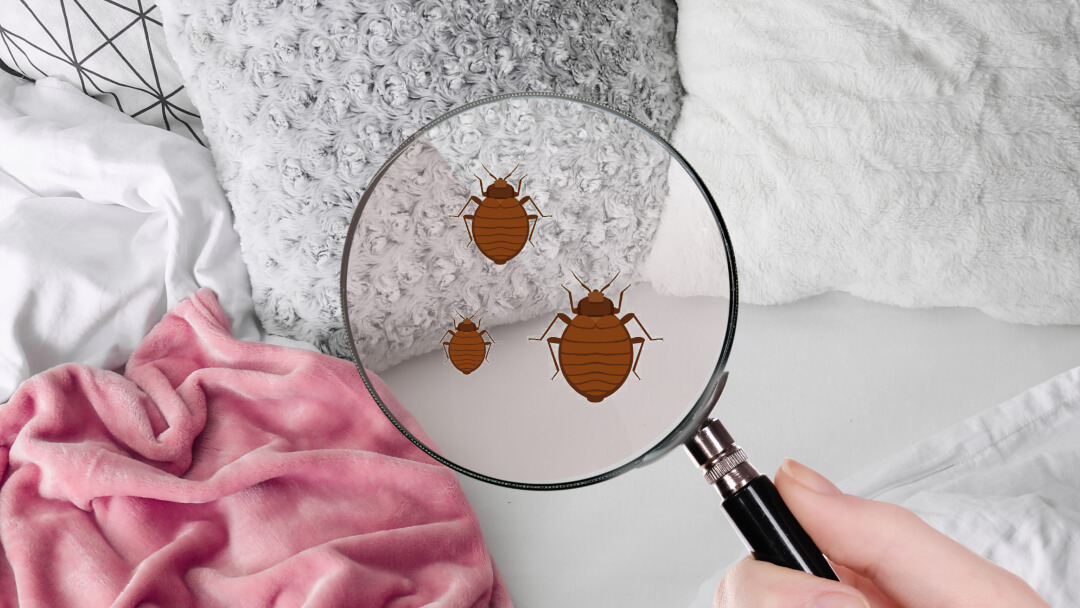A1 Bed Bug Exterminator Houston: Trusted Treatment Solutions
A1 Bed Bug Exterminator Houston: Trusted Treatment Solutions
Blog Article
Recognizing the Lifecycle of Parasites for Targeted Control Techniques
Comprehending the lifecycle of pests is a fundamental element of efficient bug management approaches. Through a deeper understanding of exactly how bugs prosper and progress, customized control methods can be made to resolve specific factors in their lifecycle, inevitably leading to even more successful parasite monitoring results.
Value of Comprehending Bug Lifecycle
Understanding the lifecycle of insects is vital for developing reliable and targeted control approaches in pest monitoring. By understanding the different stages a parasite goes through from egg to adult, parasite control professionals can recognize susceptible factors in the lifecycle where treatment can be most effective.
In addition, identifying the certain environmental conditions necessary for each and every phase of the pest's lifecycle can assist choices on habitat adjustment or exclusion approaches to interrupt the lifecycle and decrease parasite populations. This expertise allows pest monitoring specialists to implement positive steps as opposed to relying only on reactive therapies, bring about more sustainable and long-lasting bug control solutions. Eventually, a complete understanding of parasite lifecycles empowers pest control specialists to customize their techniques successfully, optimizing and lessening environmental effects control end results.
Trick Phases in Insect Development
To effectively execute targeted control methods in bug monitoring, a vital aspect hinges on thoroughly recognizing and recognizing the vital phases in bug growth. Pest growth generally contains several crucial stages that are vital for their lifecycle and monitoring. The initial stage is the egg stage, where parasites lay eggs that later hatch out right into larvae. Larvae then proceed into pupae, a stage where they undertake transformation before becoming adult parasites. Recognizing these phases is important as it assists in determining prone factors in the lifecycle where control steps can be most reliable.

Vulnerabilities in Bug Lifecycle
Throughout the various phases of a parasite's lifecycle, distinct vulnerabilities emerge that can be strategically targeted for efficient control actions (A1 Bed bug Exterminator houston). One vital vulnerability exists in the egg stage, where bugs are often a lot more susceptible to certain pesticides read more or organic control agents due to their soft outer shell, making them less complicated targets for intervention. Recognizing these vulnerabilities in the bug lifecycle is vital for establishing effective and review exact control methods that successfully handle pest populaces while minimizing environmental impact.
Implementing Targeted Control Actions

Carrying out targeted control measures usually involves a multi-faceted technique. This may include environment alteration to make the atmosphere much less welcoming to insects, such as getting rid of standing water for mosquito control or sealing entrance factors for rodents. Additionally, organic control methods can be made use of, where natural killers or pathogens are presented to maintain bug populaces in check.
Chemical control, such as the mindful application of chemicals, is one more common technique. Nevertheless, it is vital to utilize these materials deliberately to minimize environmental impact and prospective damage to non-target species. Integrated Bug Administration (IPM) methods that integrate numerous control steps in a coordinated and sustainable fashion are commonly the most efficient in attaining lasting pest administration objectives. By executing targeted control steps based on a complete understanding of pest lifecycles, insect populaces can be successfully managed while lessening threats to human health and the atmosphere.
Enhanced Pest Management Practices

Additionally, the incorporation of biological control representatives, such as natural killers or virus of insects, can assist decrease dependence on chemical pesticides and advertise a much more well balanced community. Executing physical barriers and traps can also belong to enhanced pest administration techniques, using non-toxic and targeted solutions for bug control. Additionally, the usage of pheromones and other semiochemicals can interfere with pest breeding patterns and interaction, leading to lowered bug populaces over time.
Final Thought
By determining essential stages in insect advancement and susceptabilities in their lifecycle, targeted control steps can be applied to lessen pest populaces. Boosted pest monitoring techniques can help lower the dependence on broad-spectrum pesticides and promote more eco pleasant and sustainable bug control techniques.
Recognizing the lifecycle of pests is important for establishing effective and targeted control approaches in bug monitoring. By comprehending the numerous phases an insect goes through from egg to adult, insect control professionals can determine at risk points in the lifecycle where treatment can be most successful. Eventually, an extensive understanding of bug lifecycles equips pest control practitioners to tailor their methods efficiently, optimizing and lessening environmental impacts control outcomes.
By applying targeted control steps based on a thorough understanding of insect lifecycles, insect populations can be successfully managed while minimizing dangers to human wellness and the atmosphere.
By recognizing key phases in pest advancement and susceptabilities in their lifecycle, targeted control steps can be carried out to lessen parasite populaces.
Report this page